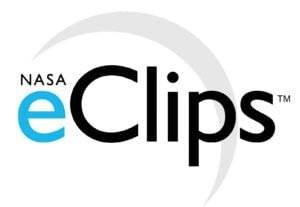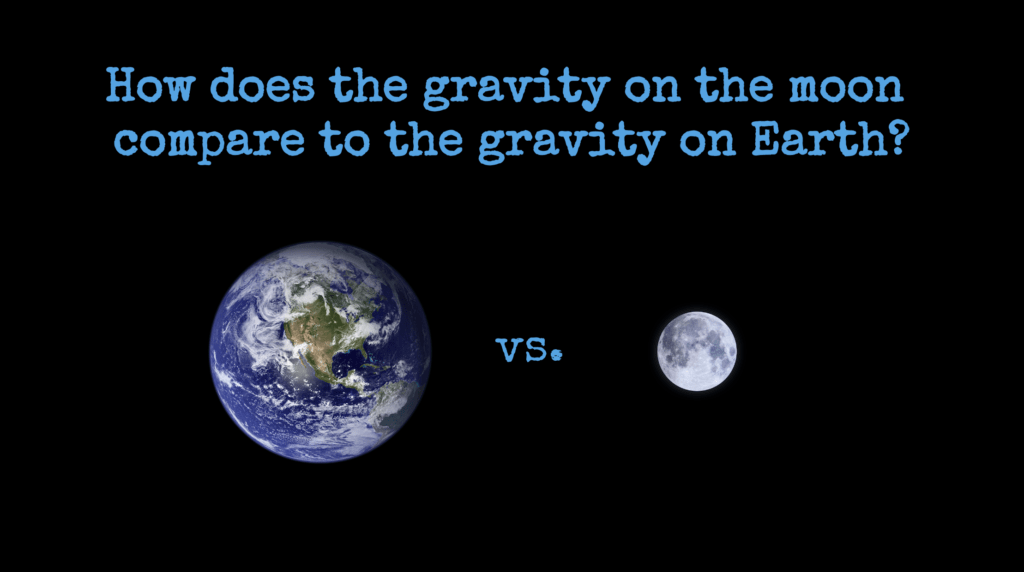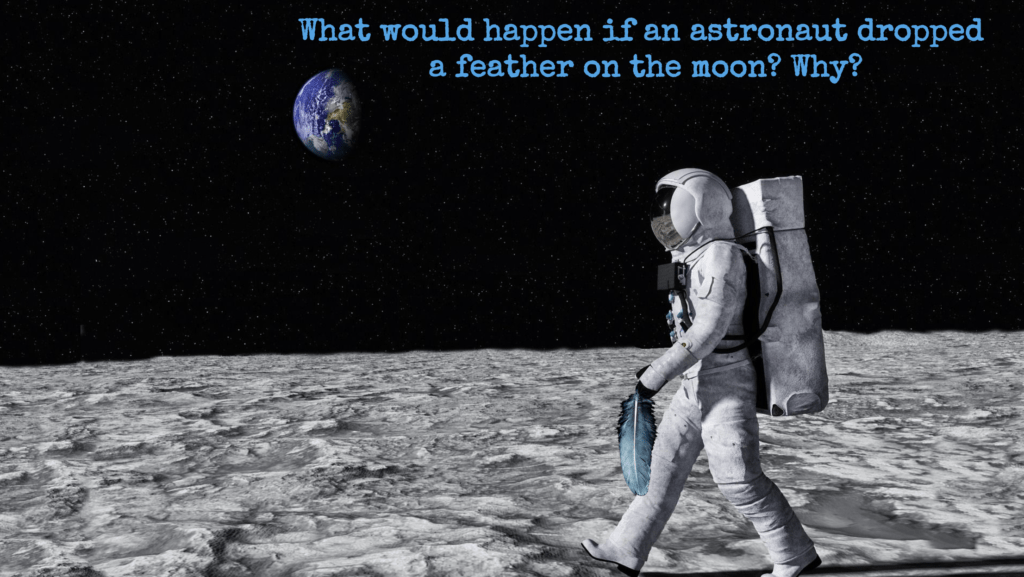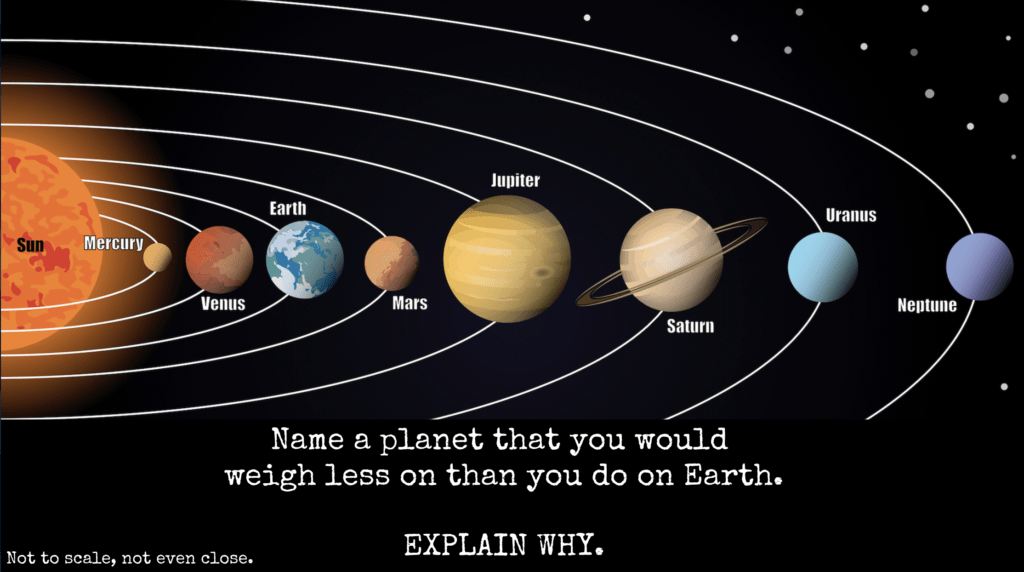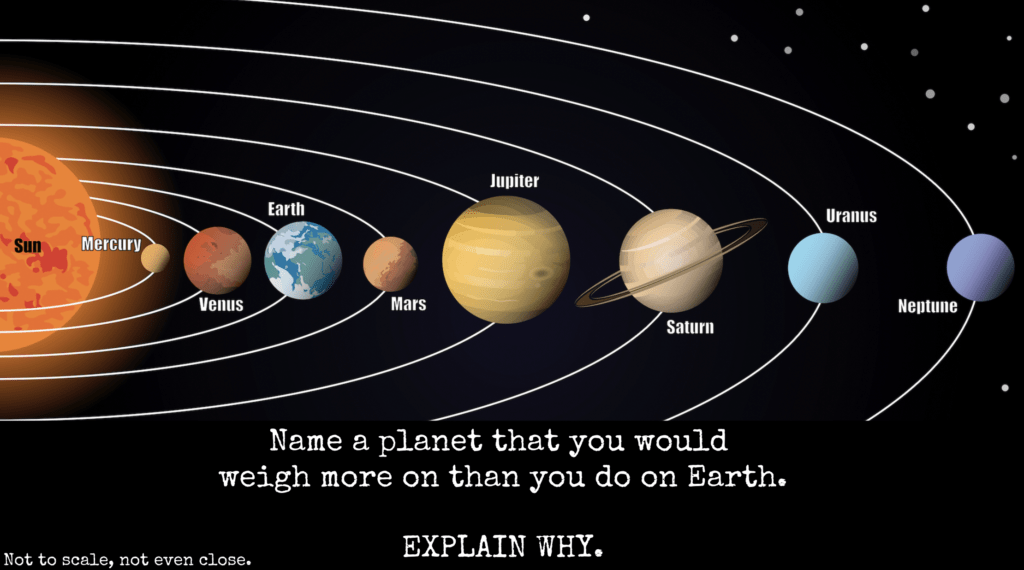For optimal viewing experience, it is recommended to access this page on a computer or large tablet.
BELLRINGERS
ESS1: Earth's Place in the Universe
MS ESS1-2
Develop and use a model to describe the role of gravity in the motions within galaxies and the solar system.
- How did Earth form?
- Draw a model that shows the relationships between the Earth, moon, and sun.
- How does the gravity on the moon compare to the gravity on Earth?
- If an astronaut dropped a feather on the moon, what would happen?
- Is there any place in the universe that has no gravity? Is so, where? Explain.
- Name a planet that you would weigh less on than you do on Earth. Explain.
- Name a planet that you would weigh more on than you do on Earth. Explain.
- Why does Earth orbit the sun?
- Why doesn't the moon fly off into space or crash into Earth?
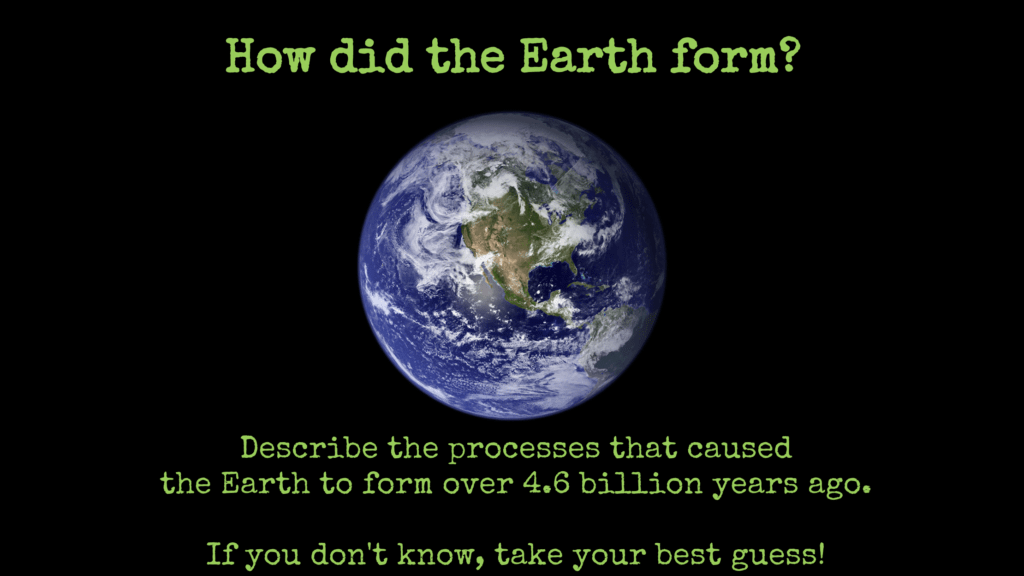
Common Misconceptions
- Earth is sitting on something.
- The Earth is flat.
- We can only know that the Earth is round by going to space.
- The Earth was formed during the Big Bang.
Additional Resources
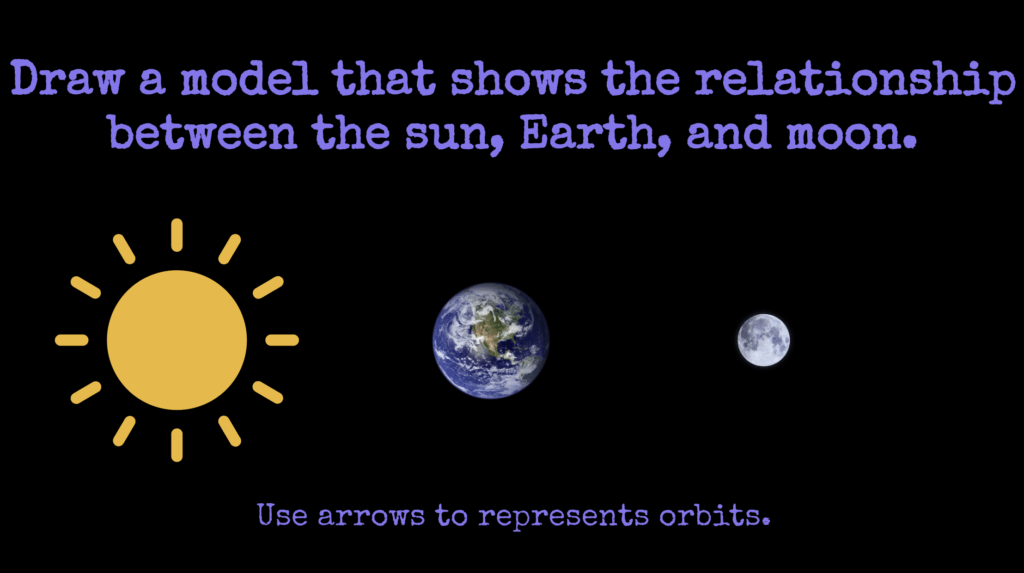
Common Misconceptions
- Earth is sitting on something.
- Planets orbits are strongly elliptical. (They are often drawn this way to fit onto a page.)
- The Earth is the center of the Solar System.
- The sun, Earth, and moon are about the same size.
Common Misconceptions
- There is no gravity on the moon.
- A feather would float if dropped on the moon.
- Gravity requires air or some other medium.
Additional Resources
Common Misconceptions
- There is no gravity on the moon.
- A feather would float if dropped on the moon.
- Gravity requires air or some other medium.
Additional Resources
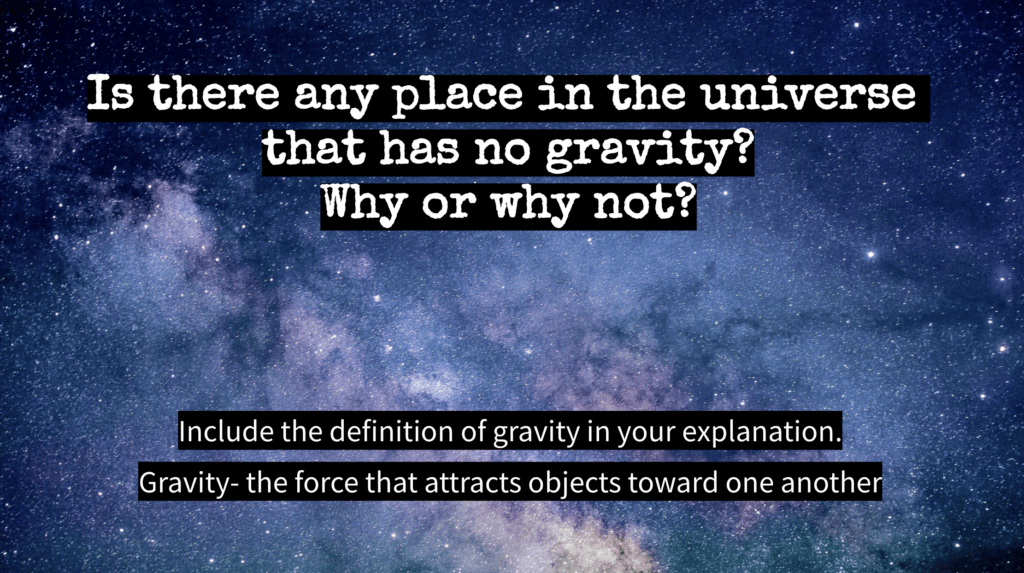
Gravity is the force that attracts objects toward one another.
Common Misconceptions
- There is no gravity on the moon.
- A feather would float if dropped on the moon.
- Gravity requires air or some other medium.
- There are places in space that are zero gravity.
- Planets with thin atmospheres have little gravity.
- Planets distant from the sun have little gravity.
- Gravity is stronger between the most distant objects.
- Astronauts in a space shuttle are weightless because there is no gravity above Earth.
Additional Resources
Common Misconceptions
- There is no gravity on the moon.
- A feather would float if dropped on the moon.
- Gravity requires air or some other medium.
- There are places in space that are zero gravity.
- Planets with thin atmospheres have little gravity.
- Planets distant from the sun have little gravity.
- Gravity is stronger between the most distant objects.
- Astronauts in a space shuttle are weightless because there is no gravity above Earth.
Additional Resources
Common Misconceptions
- There is no gravity on the moon.
- A feather would float if dropped on the moon.
- Gravity requires air or some other medium.
- There are places in space that are zero gravity.
- Planets with thin atmospheres have little gravity.
- Planets distant from the sun have little gravity.
- Gravity is stronger between the most distant objects.
- Astronauts in a space shuttle are weightless because there is no gravity above Earth.
Additional Resources
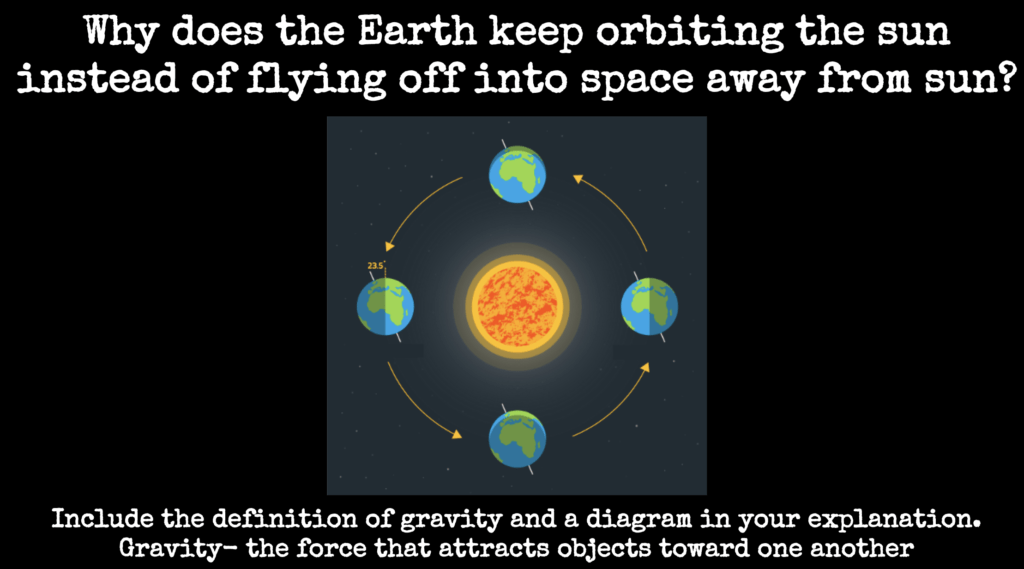
Include the definition of gravity and a diagram in your explanation. Gravity is the force that attracts objects toward one another.
Common Misconceptions
- Planets orbits are strongly elliptical. (They are often drawn this way to fit onto a page.)
- The Earth is the center of the Solar System.
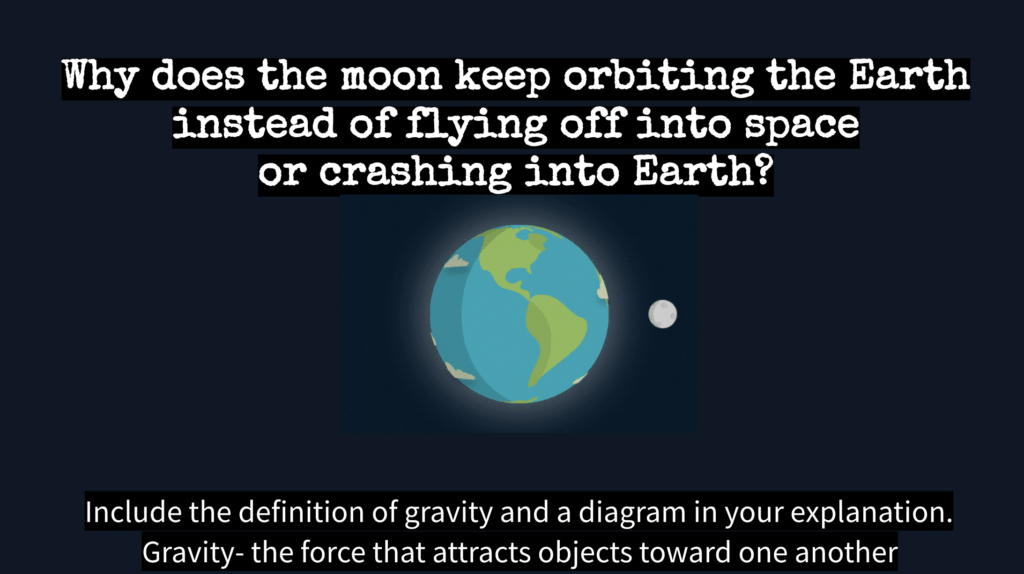
Common Misconceptions
- The moon takes one day to orbit Earth.
- The moon orbits the sun instead of Earth.
- The moon has a permanent dark side. (The moon spins on an axis as well!)

